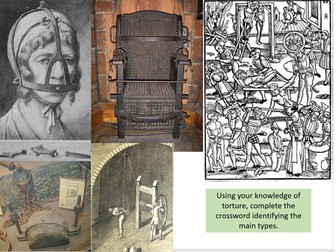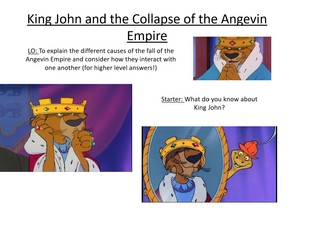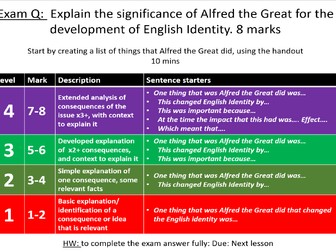
Edexcel: 33: Witchcraze: North Berwick Witch Hunts: Scotland
This lesson focuses on the later aspects of the North Berwick hunts – so Agnes Sampson and John Fian, with the expectation that they have looked at King James and Gilly Duncan already.
Pupils start with a nice summary of why there was a witchcraze in Scotland, then an introduction to Sampson and Fian. Pupils then analyse Sampsons confession, before completing a worksheet that summarises Sampsons story.
Focus then shifts to an overview of Fian, more source analysis before considering the charges against him and the methods used, and more source analysis of the methods.
Then a comparison table between Sampson and Fian, before looking at exam spec with an exam question and suggested areas to include in an answer, written in exam speak.


